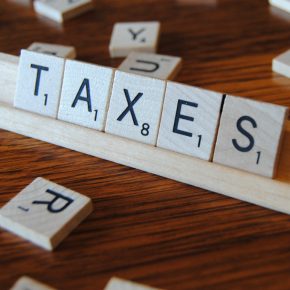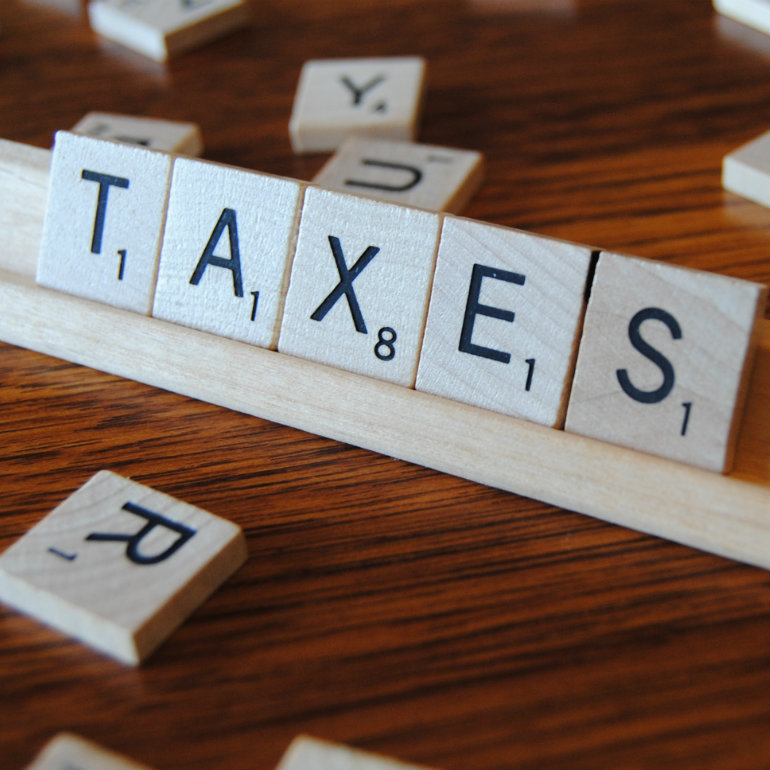Tydzień w gospodarce
Category: Trendy gospodarcze

(GotCredit, CC BY)
CE Financial Observer: The balance of payments is used to assess the sustainability of the economy and its resilience in the event of external shocks, at least according to the definition. How is Poland doing?
Jacek Kocerka: The Polish economy is sustainable and exhibits decent resilience to external shocks. This does not mean, however, that we are completely independent of what is happening abroad, because no country is. We can import some of the deflation or, on the contrary, inflation, for example through the changing prices of crude oil or other raw materials. Other economic phenomena, such as the changes in demand in the Eurozone, also influence Polish economy.
How does stability look in terms of numbers?
Such comparisons begin with the current account balance in relation to GDP — in 2017 it amounted to 0.3 per cent of our GDP and has been positive for the first time since 1989. If we were to take into account the EU transfers, the surplus would amount to as much as 1.6 per cent of GDP. The second criterion is the international investment position in relation to GDP. In our case, it amounted to 60.7 per cent, and its size and structure also do not raise any concerns regarding stability.
Over the past two decades Poland has been developing in such a way that it imported savings from abroad and the current account deficit was mainly a measure showing how much money Poland needed to import for this development. Now, the country has a surplus instead of a deficit, and is increasingly exporting its capital.
This is probably not a permanent occurrence, because in March 2018 there was a current account deficit of EUR950m?
Yes, but in January there was a surplus of EUR2bn, so it is too early to make judgments about the result by the year-end.
So could this surplus be permanent?
I believe that the current account balance will be close to zero. Even if the deficit returns one year, then it will be small, and if Poland maintains a surplus, then it will not be huge either. My conviction is based on the observation of medium-term trends that contributed to this result, i.e. the current account surplus on services is still clearly growing, that is, Poland is exporting more and more services, especially accounting, legal and consulting services from the numerous shared service centres created in the country.
On the other hand, the trade balance on goods has been showing smaller surpluses in recent months, i.e. in this classically understood measurement of import and export of goods, imports are growing faster than exports, and this is a trend going in the opposite direction to the growing export of services.
By the end of 2017, the surplus in trade in goods ultimately amounted to EUR810.4m, and the surplus in the trade in services amounted to EUR18.3bn. Is Poland transitioning from a country of assembly plants and factories to a country of office workers?
This is a striking comparison, but let us remember that — in absolute terms — the exports of goods last year alone amounted to almost EUR197bn, and the export of services amounted to EUR51bn, i.e. almost four times less. However, in the balance of goods, there are no such surpluses as in the case of services, because, as I have mentioned, it just so happens that recently exports are almost equal to imports. In the services, this surplus is growing, because new shared service centers are being opened in Poland.
We therefore fit into the international division of labor, in which new products are invented in R&D centers in the United States and the EU, the accounting and legal services are located in Poland, and the production is carried out in China?
Yes, and interestingly enough, we are located in the middle of this chain not only in the case of services, but also in the case of goods. More and more often Polish companies buy parts in China and assemble them into finished products or semi-finished products, which they then sell in European Union countries, primarily competing on the prices.
Does this model have a future?
I can’t make such judgments. I can only say, that there are no reasons on the horizon why it would change in the near future.
In 2017 the value of foreign direct investment (FDI) reached EUR5.62bn, which is 55 per cent less than in 2016. Does no one want to invest in our country?
This is not exactly the correct interpretation. In 2017, there were simply a few transactions in which a domestic investor bought shares from a foreign investor who was withdrawing from Poland. The repolonization of the banking sector received the most media coverage, but this process wasn’t only limited to banking sector. In every industry where a foreign company sells its shares, and a Polish company purchases them, the amount of this transaction is recognized in the balance of FDI with a negative sign.
Are many investors withdrawing?
It is rather the case that we are seeing a structural change — new investments in Poland are primarily investments in services, and no longer in capital-intensive production. Figuratively speaking — it is simply cheaper to buy computers and telephones and to rent office space, than to find a field, build a factory and a road, and to employ hundreds of people, as was the case in the 1990s. Of course, this change affects the FDI balance.
You recalled in an interview at the beginning of the year that, “since 2004, when the CIT rate was reduced from 27 per cent to 19 per cent, we have been observing a trend in which the share of reinvested profits is relatively high.” What does it mean that it is relatively high?
The long-term tendency is that between 40 and 60 per cent of the profits remain in Poland and is allocated for the development of the company, which is a rather favorable proportion for the country. Returning to the previous topic, in the production sector these profits are often reinvested. Those who have built factories here a few years ago are developing them, but new investments are now being created in the services sector. In the production sector, many of the investments are financed from the profits generated in previous years, and not from the inflow of new funds from abroad.
But why did Polish investments abroad decrease so much as well? They only amounted to EUR3.15bn in 2017 following a record-breaking result of EUR7.4bn in 2016.
Almost all of this change can be explained by the base effect. The year 2016 was very unusual, because Poland had a number of transactions caused by the legal changes applying to investment funds created in order to avoid double taxation. We estimate that these one-off transactions were worth more than a dozen billion PLN. Without them, the result would be similar to the long-term average.
Is it possible to estimate how much Polish investment abroad is genuine investment and how much is tax optimization?
It is not possible to do that easily, because there is no precise definition of optimization flows, or ways to identify an entity that could be used for such purposes. A wider discussion on this subject is currently underway, not only in Poland, but also on international statistical forums, and perhaps some common methodology may be developed over time.
So the simple geographical criterion does not work? When we see Cyprus or Luxembourg as the destination country, that should narrow it down?
It’s not that simple. Cyprus doesn’t always mean optimization, and the situation with Luxembourg is even more difficult, as a lot of transactions go through that country, not only for tax reasons. Above all, both these countries offer the possibility of very efficient implementation of changes in the structures of capital groups.
And if we have a legal structure of Poland–Luxembourg–Poland then this could be about avoiding taxation in Poland, but we might as well have a legal structure of Poland–Luxembourg–Third Country, which may serve the avoidance of taxation in that third country and in which some taxes may be paid in Poland. In the absence of agreements on the avoidance of double taxation between Poland and that third country, the failure to utilize an entity in Luxembourg and the agreements between Luxembourg and that third country could put a Polish investor at a disadvantage compared with investors from other countries.
So tax optimization isn’t always bad?
Optimization has various effects for Poland. Sometimes, it is the case that some of the taxes that should be paid in Poland are paid, for example, in Ireland, but on the other hand, sometimes the taxes that should be paid in another country may be paid in Poland, because that is favorable for some international capital groups. In Polish investments abroad, we see a lot of “investments” that ultimately return to Poland through the aforementioned countries, and which may be motivated by the desire to avoid taxation. However, it is impossible to prepare a credible balance of costs and benefits.
Does the balance of payments confirm the narrative about Polish companies that take over competitors in Western Europe in order to gain access to the local markets?
Of course, we record such transactions, but they haven’t reached a huge scale yet. For now the investments are dominated by transactions of SME companies, with volumes of a few or a dozen or so million EUR. Poland hasn’t yet become China, which is buying everything that is available for purchase, but that may change over time.
Jacek Kocerka is a deputy director at the Department of Statistics in Poland’s central bank, Narodowy Bank Polski.


